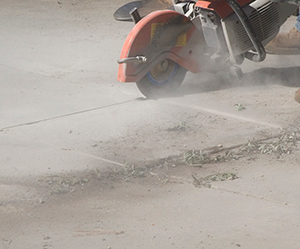OSHA and NIOSH debate workplace injury reporting mandate
The Occupational Safety and Health Administration (OSHA) is proposing to drop its mandate requiring workplaces to send OSHA reports regarding every injury and illness. Meanwhile, the National Institute for Occupational Safety and Health (NIOSH) is asking OSHA to keep the reporting mandate and offering to analyze the reports, according to Bloomberg Law.
OSHA approved the requirement during the Obama administration, but it has been delayed under the Trump administration as the agency considers whether to overturn parts of the rule. NIOSH submitted comments to OSHA Sept. 28, 2018, saying the information OSHA would stop collecting offers "a uniquely representative and comprehensive data source" regarding injuries. One of the reasons OSHA wants to drop the mandate is the agency is unable to handle and analyze the hundreds of thousands of employer reports, which NIOSH is offering to help manage. NIOSH says it has developed software that can handle large amounts of workers' compensation claims data from states and can be used to sort through the injury and illness reports.
David Bonauto, research director at Washington state's Safety and Health Assessment and Research for Prevention, told Bloomberg BNA the details on an individual injury and illness case summary—called OSHA Form 301—are crucial for avoiding injuries. He also said software programs can be designed so they do not collect personal identification information and can protect workers' privacy. Various groups are offering to help OSHA develop methods to review reports.
Many businesses support a July 2018 proposal from OSHA to drop requirements to electronically file OSHA Form 301 and an annual log known as OSHA Form 300 for companies with 250 or more employees. This is a proposed rulemaking by the agency that has yet to become final.
OSHA said if it drops the requirement, it would eliminate the possibility that workers' personal information could be publicly released by court order. However, employers still would need to file an annual summary report—OSHA Form 300A. OSHA Form 300A requires employers to list an establishment's total number of injury and illness cases that required more than first-aid treatment, as well as the types of injuries and illnesses experienced. OSHA could use the information to plan inspections.
Currently, establishments with 20 or more employees in certain industries, such as construction, must electronically file OSHA Form 300A annually.
DOL delays could hinder employer access to seasonal workers

|
The Department of Labor's (DOL's) Office of Inspector General found in a recent report that long processing times could hinder employer access to seasonal workers, and DOL has no way of ensuring employers' needs are met, according to Bloomberg BNA.
The average time to issue a prevailing wage determination—the wage employers must pay their H-2B workers—was 35 days in fiscal years 2016 and 2017. The average labor certification processing time was 71 days; labor certification ensures hiring H-2B workers won't displace U.S. workers or harm their working conditions. Employers are not allowed to submit their labor certification applications more than 90 days before they need H-2B workers, and they still must go through U.S. Citizenship and Immigration Services (USCIS) and the Department of State before the workers can start work.
H-2B visas, which are used for temporary seasonal work outside of agriculture, currently are in high demand. The Office of Foreign Labor Certification is documenting application receipt times to the millisecond to determine the order in which applications should be processed.
In early 2018, USCIS held the first-ever H-2B visa lottery because demand exceeded the 33,000 visas available for spring. A second lottery was held for an additional 15,000 visas that were made available after receiving congressional approval. The administration reportedly is skeptical employers truly need H-2B visas; the additional 15,000 visas only were given to employers that could prove they would face irreparable financial harm without access to H-2B workers. DOL also launched two H-2B initiatives for the landscaping and hospitality industries that combine compliance assistance with employer investigations.
DOL's Employment and Training Administration says it is working to alleviate backlogs but says employers will not be financially harmed by the delays because the annual cap on H-2B visas already prevented employers' access to H-2B workers.
OSHA ramps up silica rule enforcement

|
Safety inspectors found 640 violations during the first year of enforcing new federal requirements protecting construction workers from inhaling silica dust, according to Bloomberg Law.
When the Occupational Safety and Health Administration (OSHA) released the rule in March 2016, it said the construction silica rule and related regulations for other industries should annually prevent 642 deaths and 918 moderate to severe lung disease cases. OSHA also estimated the annual cost to implement the rule would be $1.03 billion. However, safety consultants and employer representatives say OSHA underestimated compliance costs by as much as tenfold.
OSHA currently is considering revising the methods acceptable for reducing silica exposure and may ask for suggestions for additions to its instructions, called Table 1. Contractors want OSHA to expand the types of acceptable methods for reducing silica dust; many existing methods involve using water to limit the spread of dust, which often isn't practical.
To comply with the rule, contractors had to reduce permissible amounts of airborne silica exposure by 80 percent of the previous mandate. Inspectors cited 144 violations for employers that failed to measure airborne silica levels to determine whether workers were endangered. There were 141 violations of the mandate for employers to follow OSHA's instructions regarding using construction techniques meant to reduce the amount of silica released into the air. There also were 125 citations for lack of a written silica exposure prevention plan, and 55 citations for employers that failed to educate workers regarding the hazards of silica exposure.
Violations labeled "serious"—meaning there was a "substantial probability that death or serious physical harm" could result from the exposure—accounted for 77 percent of the citations.
NRCA has been conducting personal breathing zone sampling on roofing job sites where silica may be present to assess worker exposures to respirable crystalline silica (RCS). This effort is intended to establish roofing industry objective data that contractors can rely on, particularly when performing tasks not listed in Table 1 of OSHA's regulation. Industry objective data can relieve contractors from the expense of conducting their own sampling if the tasks being undertaken are similar to those found in the objective data. In a majority of sampling conducted on asphalt shingle, polymer-modified bitumen and built-up roofing tear-offs and installations, exposures not only were below the permissible exposure limit (PEL) but also below the action level and in many instances below the limit of detection. Levels of total respirable dust also were well below the OSHA PEL. In addition, sampling was performed on tasks such as drilling into concrete for fastener attachment, cutting and fastening gypsum roof boards, and installation of roof gravel—all with equally positive results.
NRCA offers explanatory material and summaries of the sampling reports in the Members Only section of its website, www.nrca.net, as well as Toolbox Talks regarding RCS in English and Spanish; a customizable sample written silica exposure control plan required by the rule; a sample written respiratory protection plan; and links to other resources that may help with compliance. NRCA's silica regulation resources are available at www.nrca.net/Silica-regulation-resources.
More reports will be added to the silica regulation resources section as NRCA continues to conduct sampling on additional roofing projects.
OSHA revives workplace safety advisory panel
The Occupational Safety and Health Administration (OSHA) announced Oct. 22, 2018, the revival of the National Advisory Committee on Occupational Safety and Health, according to Bloomberg Law.
During the Obama administration, the panel of employer and worker representatives and safety professionals pushed OSHA to address various safety issues, including safety programs for temporary workers, writing a preliminary version of regulations for first-responder safety and encouraging more people to enter the safety career field. Members of the panel, which has been dormant for the past two years, help regulators understand concerns outside of Washington, D.C.
OSHA sought nominations for a dozen committee seats through Dec. 24, 2018. Applications now are being reviewed by OSHA, and Labor Secretary Alexander Acosta will make the final selections.
OSHA announced Sept. 14, 2018, it revived another advisory panel—the Advisory Committee on Construction Safety and Health. Nominations for that panel were accepted through Nov. 16.
The panels' dormancy reportedly can be attributed in part to the lack of a Senate-confirmed administrator to oversee OSHA. President Trump's nominee, Scott Mugno, has passed two Senate committee votes but has not been considered by the full Senate.
Fall protection tops 2018 list of OSHA's most-cited violations
The Occupational Safety and Health Administration (OSHA) announced Oct. 23, 2018, that dangers from falls at construction sites remained the most frequently cited hazard on OSHA's list of most-cited violations for fiscal year 2018, which ended Sept. 30, 2018.
Construction violations were the most commonly cited; construction site visits account for about half of OSHA's job-site inspections. Other construction fall-related violations were ladders, scaffolding and training.
OSHA generally requires construction workers exposed to falls of 6 feet or more to wear protective gear, such as harnesses, or be protected by guardrails and be trained regarding how to avoid falling.
Electrical wiring requirements dropped off 2018's list and was replaced by lack of eye and face protection for construction workers.
Following are the top 10 most-cited violations for fiscal year 2018:
OSHA has up to six months to issue citations following an inspection.
COMMENTS
Be the first to comment. Please log in to leave a comment.